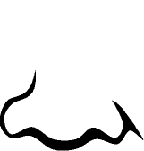Bacteria-Stocked Beverage Clears Pathogens from Nose
Dangerous bacteria often take refuge deep inside peoples noses, where they can remain dormant until they find an opportunity to invade other parts of the body. Perhaps the most important of these stowaway nasal microbes is Staphylococcus aureus, which can spread to wounds and surgical incisions and cause life-threatening blood infections. As many as a quarter of U.S. residents may harbor S. aureus in their noses, say epidemiologists.


Fortunately, help could be on the way in the form of an improbable tactic: Taking a daily swig of a beverage thats swimming with live, friendly bacteria. For about 1 in 5 people who try it, this approach delivers a punch in the nose to the lurking pathogens, a new Swiss study suggests.
Considerable evidence indicates that ingesting certain bacteria, called probiotics, can maintain or improve intestinal health. Some researchers have also examined whether these bacteria could aid health in other parts of the body (SN: 2/2/02, p. 72: Germs That Do a Body Good.).
Some of the benefits of probiotics could be explained through their direct aggression toward pathogens or their competition with these nasty bugs for resources within the body. Probiotic bacteria also seem capable of stimulating the immune system, which could have broad health benefits.
To see whether a probiotic could help tackle the problem of bacteria hiding in the nose, Jan-Olaf Gebbers of the Institute of Pathology and Environmental Medicine in Lucerne, Switzerland, and his colleague Ulrich Glück recruited 209 healthy volunteers and tested their nasal cavities for numerous bacteria. Almost half of the volunteers noses carried at least one potential pathogen.
The researchers also divided the subjects into two groups and gave half of them a daily serving of a yogurtlike drink that contained probiotic bacteria called Lactobacillus GG. The other volunteers got yogurt that lacked live bacteria.
After 3 weeks, Gebbers and Glück stopped serving the dairy products to the volunteers and again probed their noses in search of pathogenic bacteria. The researchers did a third round of nasal inspections a week later.
None of the 51 pathogen-carrying plain-yogurt drinkers gained or lost any species of potential pathogens from their noses during the study. In the group that consumed Lactobacillus GG, however, 13 of 68 people carrying pathogenic bacteria had eliminated them after 3 weeks of treatment. In those people, the bacteria hadn’t returned a week later, the researchers report in the February American Journal of Clinical Nutrition.
Although the study didn’t address how the beneficial bacteria swallowed by the volunteers could have affected their respiratory tract, Gebbers and Glück hypothesize that ingesting Lactobacillus GG stimulates intestinal immune cells and causes them to migrate to other parts of the body. In the nose, these cells could increase production of proteins that are typically abundant only in the intestines and that are particularly effective against pathogens such as S. aureus. The researchers are now conducting further studies to test that hypothesis.
The novel finding is remarkable because it suggests that a probiotic can produce a general stimulation of the immune system, says nutritional epidemiologist Martijn B. Katan of the Wageningen Centre for Food Sciences in the Netherlands. Nevertheless, he says, until independent researchers can reproduce the result, the evidence isnt strong enough to justify taking Lactobacillus GG to fight bacteria outside the intestine.
Katan notes that by chance fewer of the volunteers getting plain yogurt initially had nasal pathogens than did the probiotic-treated group, and also that the researchers didn’t disguise who was receiving probiotic bacteria and who wasn’t. Both of these aspects of the study could have thrown off the results, says Katan.
However, if further research supports the use of Lactobacillus GG against nasal bacteria, it could find applications in hospital settings, where dangerous blood and wound infections often arise from bacteria previously established in the nose.
The studys 19 percent success rate for eliminating nasal pathogens is not an overwhelming result, Gebbers admits. He says that so far it has been difficult for him to convince doctors and patients to employ the tactic, but he notes that Lactobacillus GG is inexpensive and considered safe. People who want to try it against nasal pathogens can obtain yogurt containing the bacterium, and they don’t need a prescription, he adds.







